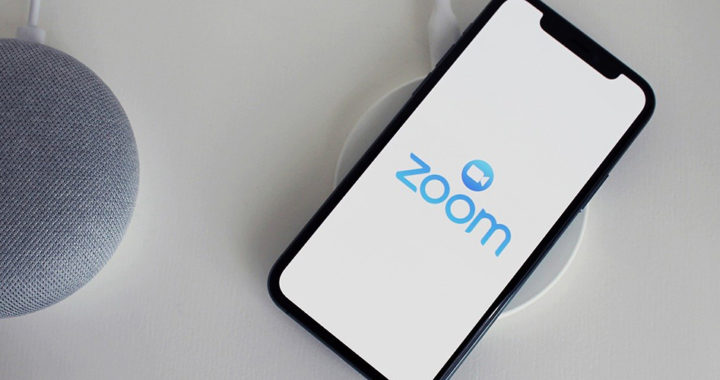Zoom has become a popular video conferencing service due to the global coronavirus pandemic that saw a number of businesses and professionals opting for a work-from-home setup, as well as learners and educational institutions choosing a distance learning scheme.
Developed and maintained by Zoom Video Communications, an American technology company based in San Jose, California, the software program became the most downloaded app in 2020, with 477 million downloads worldwide.
The success of this service comes from its notable advantages ranging from having the largest meeting participants to an abundance of business-oriented and user-centric features. This article lists and discusses the advantages and disadvantages of Zoom.
Pros: The Advantages of Zoom Video Conferencing
1. Highest Maximum Participant Capacity
When compared to similar apps and services, Zoom has the highest maximum participant capacity. The free plan supports up to 100 participants, while the enterprise-level plan can host up to 500 participants. An optional add-on can stretch the capacity to 1000 participants.
Closest competitors such as Google Meet from Google have 500 max participants and Microsoft Teams from Microsoft have 1000 participants. Webex has a maximum capacity of 200 participants while Zoho only has 100. The feature-rich teleco app Skype only allows up to 20 participants.
There are also paid options. Opting for paid plans allow users to unlock more features depending on their needs. The selection of plans offers flexibility that matches the budget and other requirements of an individual or organization.
2. Reliable Connectivity and Conferencing Quality
Another advantage of Zoom is performance reliability. The overall user experience is generally stable on average based on reviews from tech authorities. It easily outperforms other video chat and video conferencing apps like Skype and Facebook Messenger.
The company maintains data centers placed in strategic geographic locations across the world using cloud computing services from Amazon Web Services, Oracle Cloud, and Microsoft Azure. Its expansive cloud infrastructure ensures stable and reliable connectivity.
Both video and audio quality are also reliable and impressive. Video quality is up to 720p and even 1080p for Business and Enterprise plans, while audio is as clear as wired phone calls and even better than mobile voice calls under a stable internet connection. There are added features for touching up video appearance, improving brightness, and reducing background noise.
3. User-Friendly and Uncomplicated Interface
Most users do not need to create an account to participate in a meeting. All they have to do is download the app on their mobile devices or click on a link to join a scheduled or ongoing video conferencing. Hence, it is fundamentally easy to use.
Setting up is also hassle-free. User registration or account creation is generally straightforward. There is a free option that allows unlimited conferencing for two participants or a 40-minute conference for three or up to 100 participants.
4. Expansive Features and Productivity Tools
What sets this platform apart from the video calling feature of messaging apps is the wealth of tools focusing on both productivity and interactivity. For example, share screen and annotation features allow remote collaboration and interaction during remote meetings. Sessions can be recorded via the cloud or locally under paid plans.
Virtua backgrounds allow user personalization, promote professionalism and presentability, maintain personal or organizational branding, and ensure privacy. The smart AI assistant provides generative AI features. Paid plans include powerful tools to include user grouping and management, breakout rooms for pocket meetings, admin dashboard, recording with transcript, and chat logging, among others.
There is also support for scheduling or starting meetings from Outlook, Gmail, and iCat. Social media streaming provides better audience reach for public meetings. Paid plans also come with local toll numbers, and the add-on Audio Plan unlocks Call Out, global Toll-free, and local dial-in for selected countries.
Cons: The Disadvantages of Zoom Video Conferencing
1. Resource Heavy and Minor Performance Issues
Note that cross-platform availability is a key advantage of Zoom. It runs on macOS from Apple, Microsoft Windows, Chrome OS from Google, and Linux distributions such as Debian and Ubuntu, as well as on Android and iOS or iPadOS operating systems. However, it is considerably heavy on system resources.
The app would use about 50 percent of the processing capacity of a 2.6GHz six-core Intel Core i7 CPU. Although it does not consumes a large portion of the random access memory, its high processing demand has power consumption implications. Devices would run low on battery for extended periods of video conferencing.
Sharing screen has some delays but remains tolerable. Another drawback of Zoom is that its overall performance will still depend on the Internet connection and capacity of a user. On average, it will need between 600MB to 1.70GB of data per hour. Hence, it is also advisable to use this platform under an unlimited Internet connection plan with a download and upload speed of at least 5 Mbps.
2. Limited Features and Usability on Free Plan
This app remains a premium video conferencing platform for professionals and organizations. There is no need for regular participants to create an account and subscribe to a paid plan. However, for those who want to use this platform for hosting virtual meetings without paying, the free plan has limited features.
Sessions using the free plan would run for only 40 minutes. Of course, the host can restart the meeting, but doing so would mean reopening the app and resending a new meeting link to the participants. Note that the meeting would shut down automatically after the 40-minute limit.
Time-constrained virtual meetings that automatically shut down can interrupt an ongoing meeting, limit what the host and participants can talk about, and consume additional time from re-inviting existing participants. Some users might be better off exploring other alternatives such as Google Hangouts or Google Meet, Microsoft Team, and Facebook Messenger.

